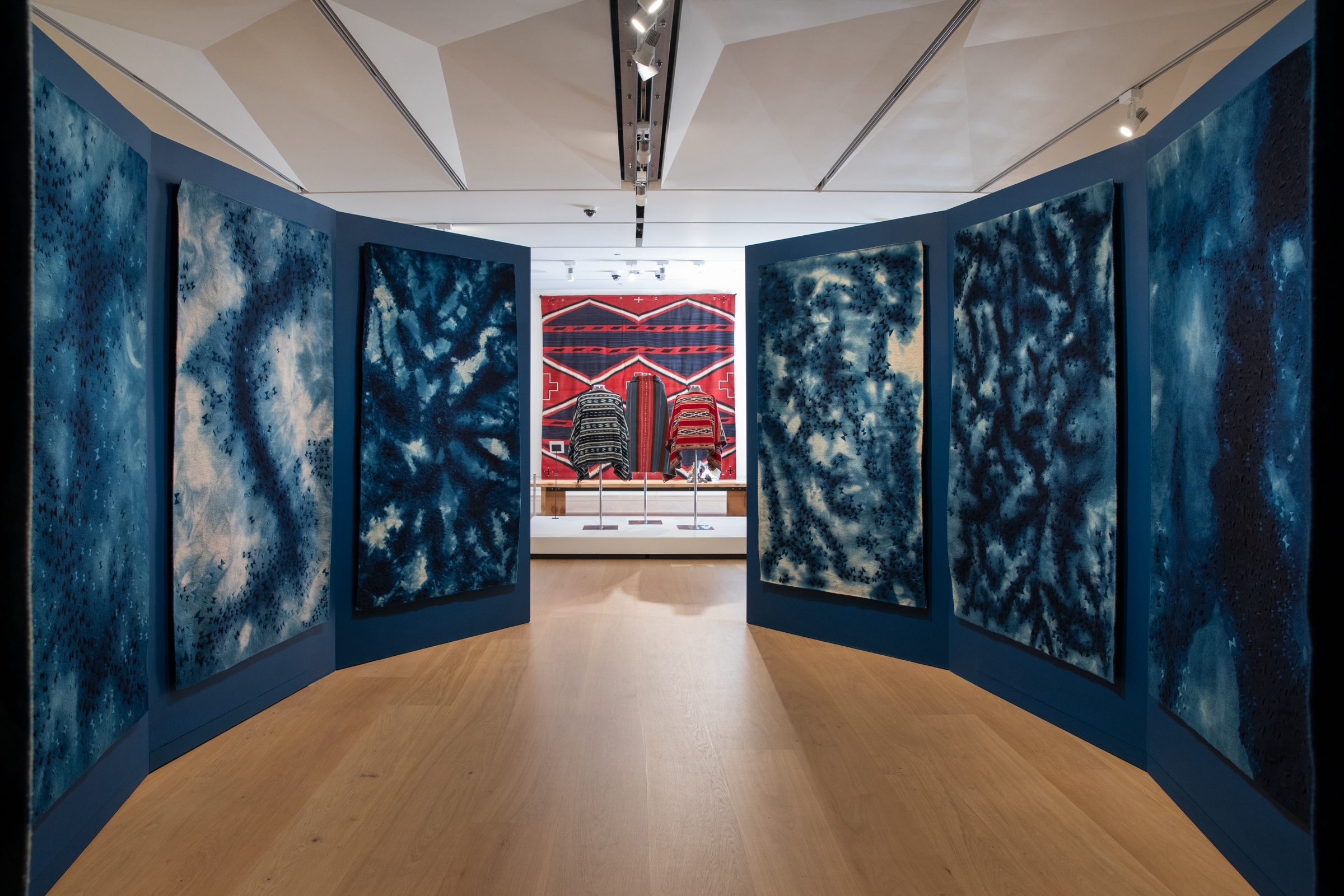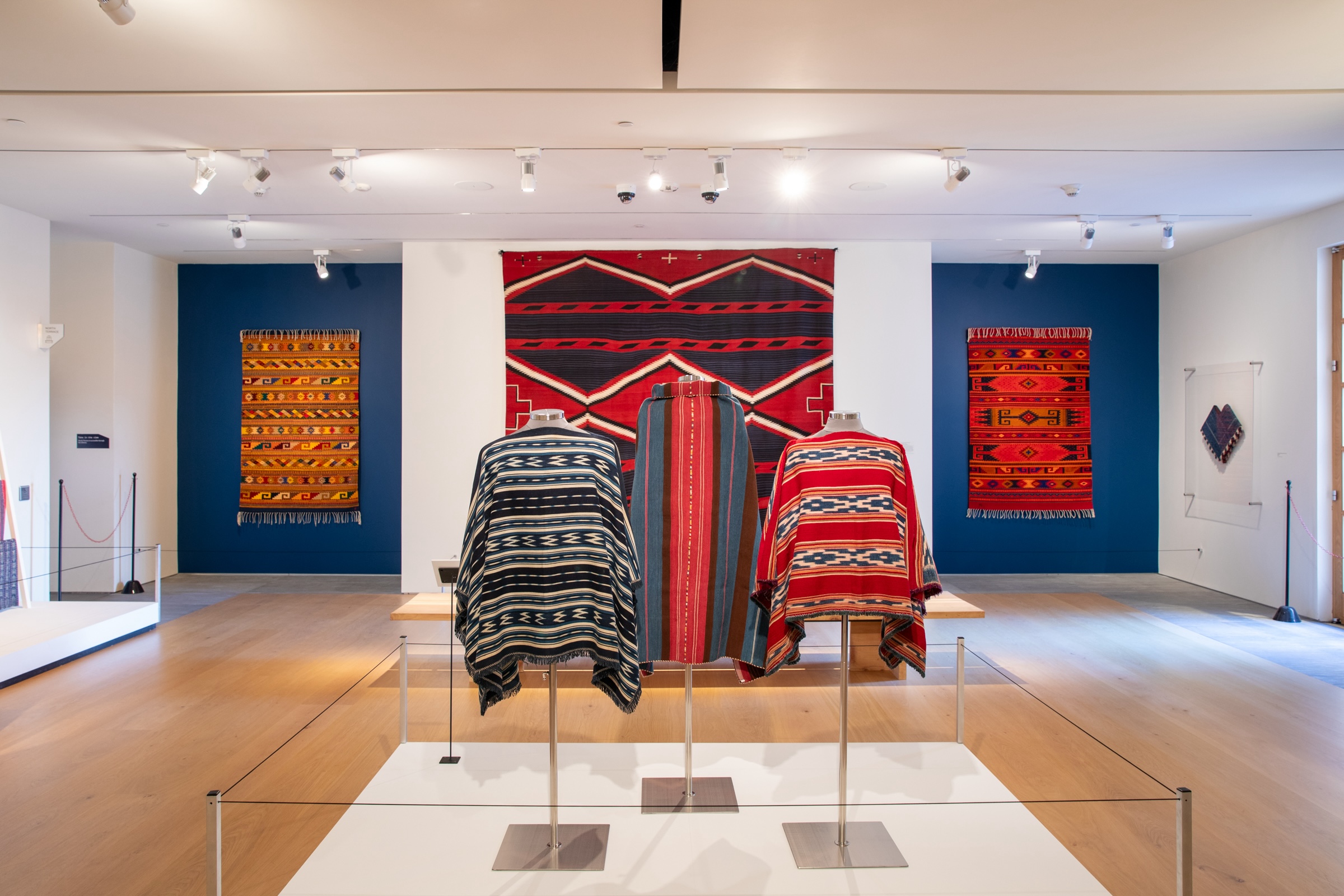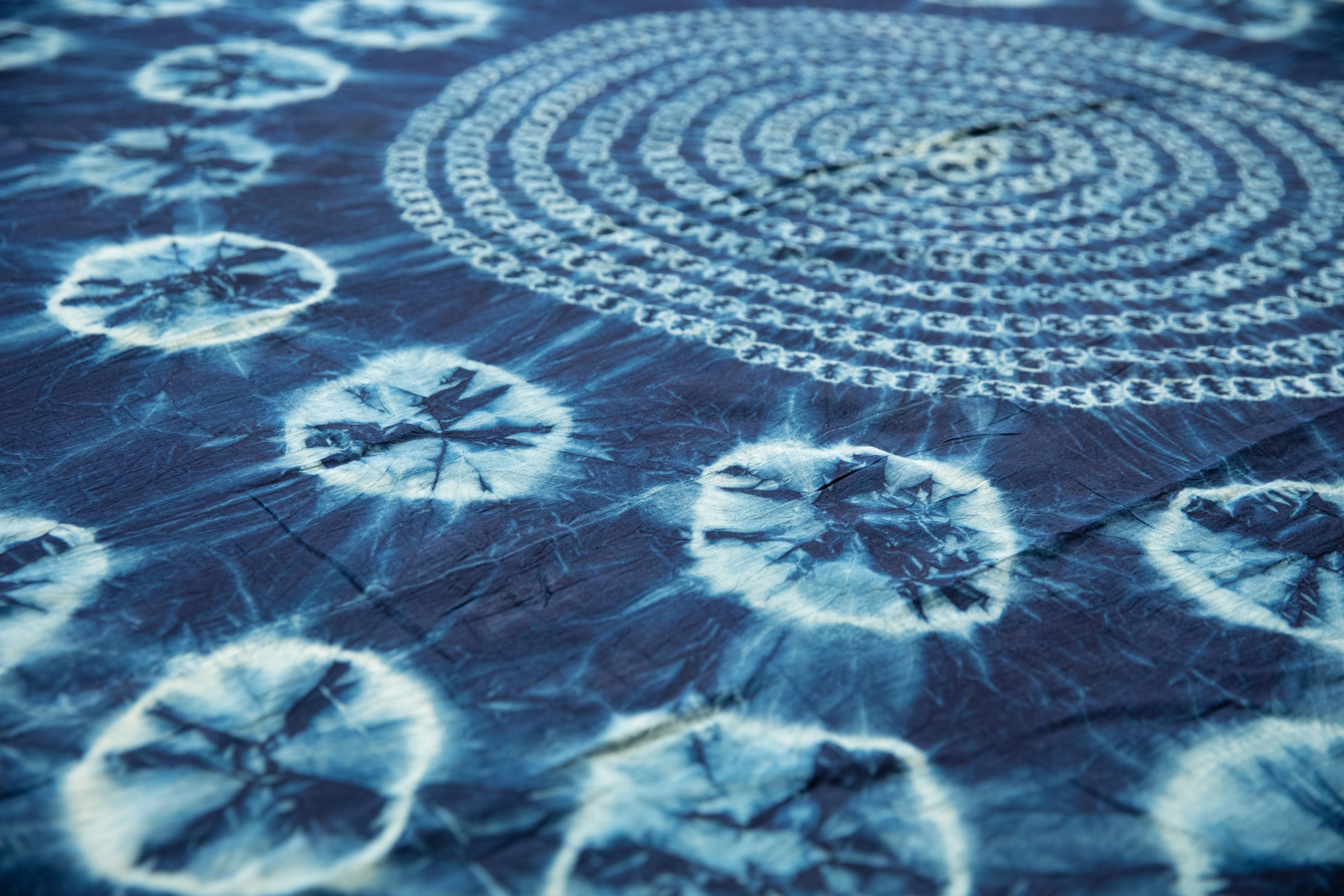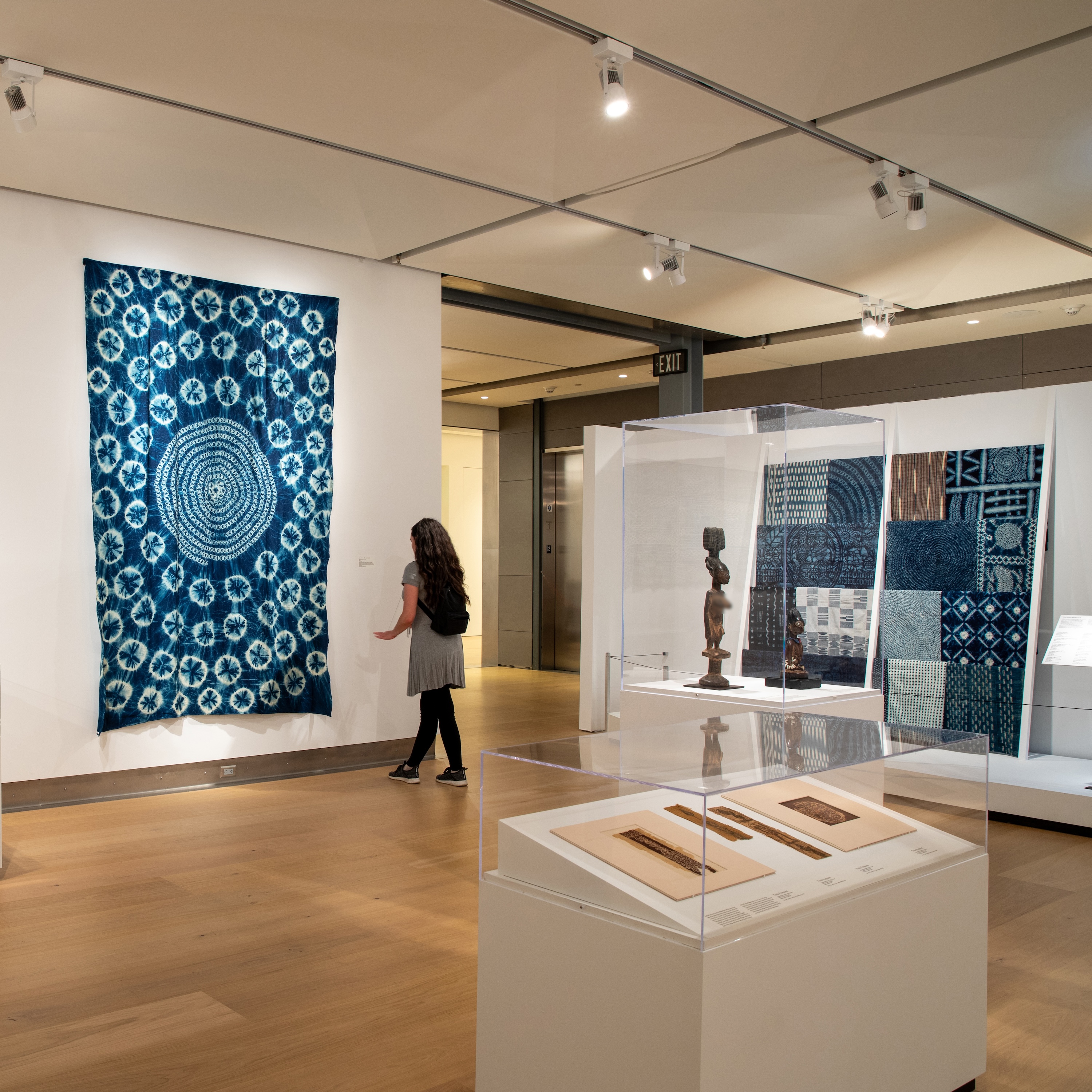Mingei International Museum
Indigo dye produces a spectrum of blues, ranging from the light azure of a sunny sky to the inky blue-black of the deepest ocean; hues so prized that the dye influenced global economies and was called “blue gold.” The precious dyestuff is extracted from a variety of plants and is one of the few naturally occurring blue pigments. It is difficult to imagine how it was first discovered that a green leaf could produce a blue dye. The process involves a delicate series of steps that alter the chemical structure of a plant. This knowledge emerged independently in cultures worldwide, accompanied by various origin stories. Each dyer has their method of creating the dye and dye vats, which are used for a wide array of dyeing techniques. Artists-the keepers of this science for generations-describe indigo as mystical, elusive, temperamental, and playful.


Indigo has a legacy spanning millennia. It crossed continents on pre-colonial trade routes and resulted in the exploitation of people through colonial-era cash crops and plantations. This, together with the advent of synthetic dyes, resulted in the loss of ancestral and indigenous knowledge in some parts of the world. In other regions, however, traditional indigo practices continued as they had for centuries. Today, artists around the world are revitalizing, reclaiming, and celebrating the art and science of natural indigo.

Blue Gold: The Art and Science of Indigo is among more than 60 exhibitions and programs presented as part of Getty’s 2024 PST ART initiative. Its latest edition, Art & Science Collide, explores the intersections of art and science. This exhibition delves into the science, uses, dye techniques, past, and present of indigo’s past and present, representing traditions from 30 countries and featuring over 180 objects including clothing and furnishing textiles, sculptures, paper manuscripts, and histology slides.

Header image: Porfirio Gutiérrez, detail Temporary Spaces, Photograph by Ron Kerner 2024.